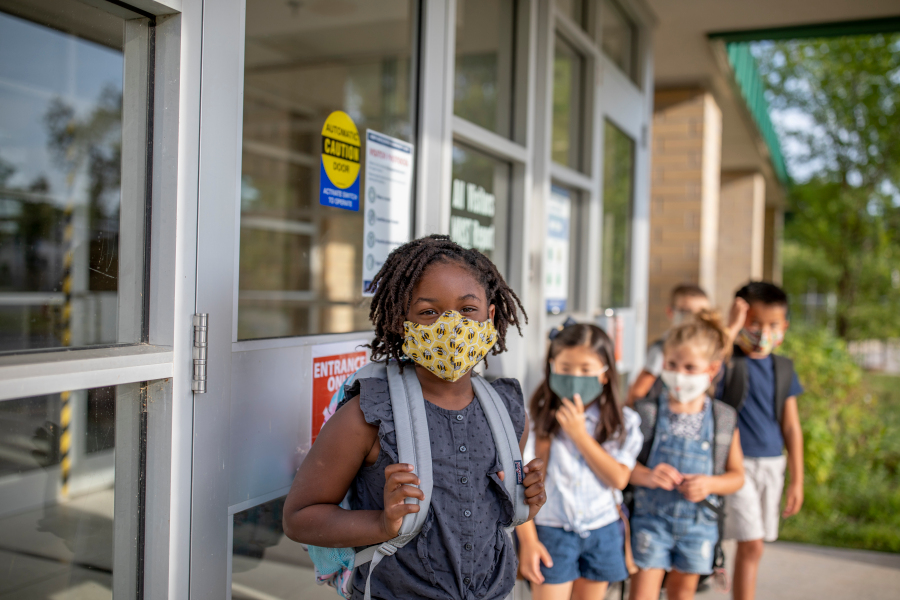The reading and mathematics scores of 9-year-old students fell between 2020 and 2022, according to results from the National Assessment of Educational Progress (NAEP) long-term trend assessment, conducted by the National Center for Education Statistics (NCES).
“These are some of the largest declines we have observed in a single assessment cycle in 50 years of the NAEP program,” said Acting NCES Associate Commissioner Daniel McGrath. “Students in 2022 are performing at a level last seen two decades ago.”
The new results represent the first report with a nationally representative sample of students comparing achievement from before the pandemic to now. Reports were collected in 2020 prior to the World Health Organization declaring COVID-19 a worldwide pandemic and were compared to NCES special data collections in 2022.
A sizeable decrease
NCES is releasing this data on an accelerated schedule, just months after the data collection concluded. This is because of the severity of the drop and the proximity to the start of the new school year. Losing in-person class time caused many students to struggle and lose connection to their teachers and peers. Now, returning students are struggling to catch up despite having traditional school schedules return.
Overall, the average mathematics score declined seven points since 2020. The mathematics scores for lower-performing 9-year-old students (students at the 10th and 25th percentiles) declined 12 points and 11 points, respectively, over that period. Mathematics scores also declined for students at the 50th (eight points), 75th (five points), and 90th (three points) percentiles.
Related: Mapped: Personal Finance Education Requirements, by State
The average reading score for 9-year-olds declined five points between 2020 and 2022. The reading scores for lower-performing 9-year-old students (students at the 10th and 25th percentiles) declined 10 points and 8 points, respectively, over that period. Reading scores also declined for students at the 50th (four points), 75th (three points), and 90th (two points) percentiles.
“During the pandemic, NCES continued and enhanced other data collections on education challenges, and they paint a sobering picture,” said NCES Commissioner Peggy G. Carr. “School shootings, violence, and classroom disruptions are up, as are teacher and staff vacancies, absenteeism, cyberbullying, and students’ use of mental health services. This information provides some important context for the results we’re seeing from the long-term trend assessment.”
The disproportionate effects of COVID-19
Data shows students of different races, ethnic backgrounds, and regions of the country were disproportionately affected. This set back many already-struggling students and widened the success gap between students of different backgrounds. The COVID-19 pandemic also changed student lifestyles and learning trends, including:
- Seventy percent of students recalled learning remotely at some point during the 2020-2021 school year.
- More students in suburban schools (73 percent) reported learning remotely compared to students in town (60 percent) and rural schools (66 percent).
- Sixty-seven percent of students eligible for the National School Lunch Program recalled learning remotely, which was lower than the percentage of students not eligible for NSLP (75 percent).
- Eighty-two percent of Asian students recalled learning remotely at some point during the 2020-2021 school year. This was higher than the percentage of Black students (72 percent), Hispanic students (67 percent), White students (69 percent), and the percentage of students who are two or more races (72 percent).
Of those learning remotely:
- 83 percent of higher-performing students in both reading and mathematics (students performing at or above the 75th percentile) had access to a desktop computer, laptop, or tablet all the time, compared to 61 percent of lower-performing students (those performing below the 25th percentile);
- 60 percent of higher-performing students in mathematics said their teacher was available to help with schoolwork at least 1-2 times per week, compared to 39 percent of lower-performing students.
While these students have many challenges to overcome, the hope of parents and teachers is to accelerate learning in upcoming years and fill in the gaps that were left due to COVID-19.




























